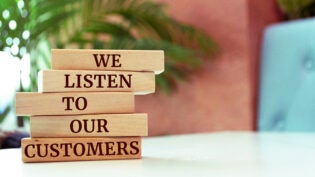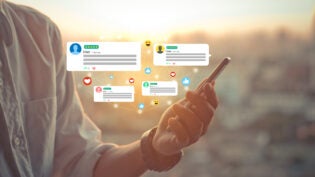
All customers are not the same.
There’s a stark contrast between B2B (business to business) and B2C (business to consumer). Businesses have different goals and needs than the typical individual consumer, and so they must be treated differently.
In other words, your customer support must accommodate these differences in order to deliver the best customer experience possible.
The customer support goals are still essentially the same: You want to help the customer and resolve their problems as efficiently as possible.
You simply reach these goals differently when working with businesses compared to consumers.
With this in mind, let’s talk about exactly how they contrast in terms of customer support.
B2B and B2C Customer Support: How They Differ
Number of Decision Makers
A decision maker is basically somebody who has the authority to make a buying decision.
B2C: Here, you usually have only one decision maker: the consumer. Occasionally the spouse is involved too, depending on the product—but there’s rarely more than one or two decision makers. So, the sales process is more streamlined, and customer support caters to the individual’s needs.
B2B: Here, there are usually multiple decision makers, each of whom may be responsible for different aspects of the purchasing decision, as well as managing the product. You must communicate with these decision makers and keep their responsibilities and concerns straight.
Motivations
Here, we’re referring to why your customer buys your product and what they want to achieve with it.
B2C: Individual consumers tend to make more emotional decisions. Perhaps your product fills a goal for them, or perhaps it simply fulfills a desire they have. Your sales team should be aware of these motivations and understand how to uncover them.
B2B: Businesses tend to think a little more long term. They want your product to fit a specific need that will help take their business to the next level, or perhaps make processes more efficient. When selling to and dealing with these customers, you should keep their longer-term goals in mind, and take a more collaborative approach on how you can help them reach these goals.
Length of Buying Cycle
The buying cycle refers to the length of time it takes the customer to make a purchasing decision.
B2C: When consumers have a product in mind, they’re usually ready to buy it in a matter of days or weeks. The selling process is a short one—it’s typically on the first touch with the customer.
B2B: As we mentioned before, businesses often have multiple decision makers. In order to complete a sale, you must get the approval of all or the high majority of those decision makers. This can take weeks or months depending on the business and the price point of your product. That’s why it’s so key to build a relationship with these types of customers. And speaking of relationships…
Type of Relationship
Here, we’re referring to the relationship you’ll have with your customer.
B2C: Because the buying cycle is so short and the price point is usually lower, you usually don’t need to cultivate a big relationship with this type of customer. You don’t need to know a ton of information about them either. If they call looking for support, it’s a somewhat simple process.
B2B: Because the buying cycle is longer, you must cultivate a closer relationship with businesses. You should have a deeper understanding of their needs, structure, challenges, etc. When they call, they shouldn’t need to give you their basic information over and over again. In fact, depending on the customer, you might even have an employee on staff specifically to manage them.
Depth of Issues
B2C: Typically, the customer’s issue or problem can be solved over the course of one, or perhaps two phone calls. The issues aren’t normally overly complex. You’ve probably run into the same types of issues with other customers, so you have a process for solving them.
B2B: Businesses are usually fairly technically savvy. Chances are, they’ve researched the issue and tried to figure it out themselves. Once they’ve realized they can’t solve the problem themselves, they reach out to you for help. As a result, the issues are naturally more complex here than with consumers—and they take more time to solve. Make sure your customer support team is prepared for these more complex issues.
You must handle customer support differently when dealing with businesses versus consumers. Make sure to be aware of these differences while reminding yourself of the overarching goal of customer support: helping your customers and solving their problems efficiently.
Have you seen any other differences in customer support between businesses and consumers? Let us know in the comments below!
3197 Views












